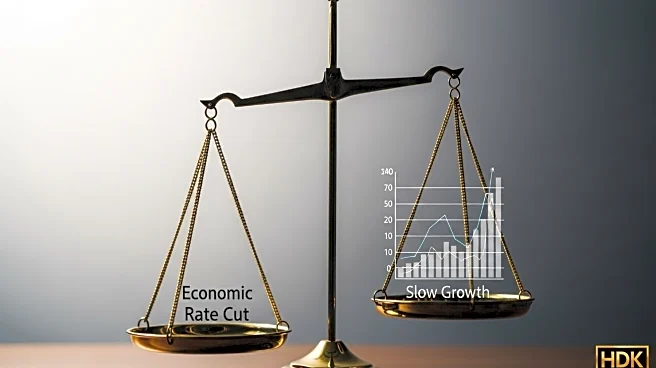What is the story about?
What's Happening?
The post-pandemic labor market in the U.S. has undergone significant changes, with technology playing a crucial role in reshaping workforce strategies. According to ADP Research, wage growth has stabilized at 2.5% between June 2024 and May 2025, marking a shift from the volatile swings experienced during the early pandemic years. HR leaders are now tasked with managing wages while ensuring employee satisfaction and fair compensation. Jay Caldwell, ADP Chief Talent Officer, emphasizes the importance of comprehensive total rewards strategies that combine base salary with benefits, incentives, and developmental opportunities. The pandemic has also influenced workforce demographics, with young workers aged 16-24 increasing their representation to 12% of the workforce. Modern HR technology platforms are revolutionizing how organizations deliver personalized benefits and support, offering tailored recommendations based on individual circumstances.
Why It's Important?
The stabilization of wage growth and the integration of technology in HR practices are significant for U.S. industries and workforce management. As companies adapt to these changes, they can better attract and retain talent by offering personalized benefits and development opportunities. This shift towards stronger wage growth and personalized HR strategies can enhance employee satisfaction and productivity, ultimately benefiting the economy. Organizations that effectively leverage technology to customize employee experiences stand to gain a competitive edge in talent acquisition and retention. The demographic shifts in the workforce also highlight the need for flexible policies that cater to diverse life-stage needs, ensuring that all employees receive appropriate support and opportunities.
What's Next?
HR leaders are expected to continue refining their strategies to address the evolving needs of the workforce. This includes developing nuanced policies that cater to specific life-phase needs, such as financial wellness programs and student loan repayment assistance. The use of technology to personalize communications and remind employees about available benefits will likely increase, enhancing engagement and utilization. As data and technology become strategic imperatives, HR teams will need to develop competencies in data analytics to anticipate talent needs and evaluate program effectiveness. The focus will be on designing programs and experiences that meet employees' current and future needs.
Beyond the Headlines
The integration of technology in HR practices raises ethical considerations regarding data privacy and the potential for bias in AI-driven tools. HR leaders must ensure that data is used responsibly and that technology enhances rather than replaces traditional development programs. Additionally, the shift towards personalized benefits and support may lead to long-term changes in employee expectations and organizational culture, requiring ongoing adaptation and innovation.
AI Generated Content
Do you find this article useful?
















